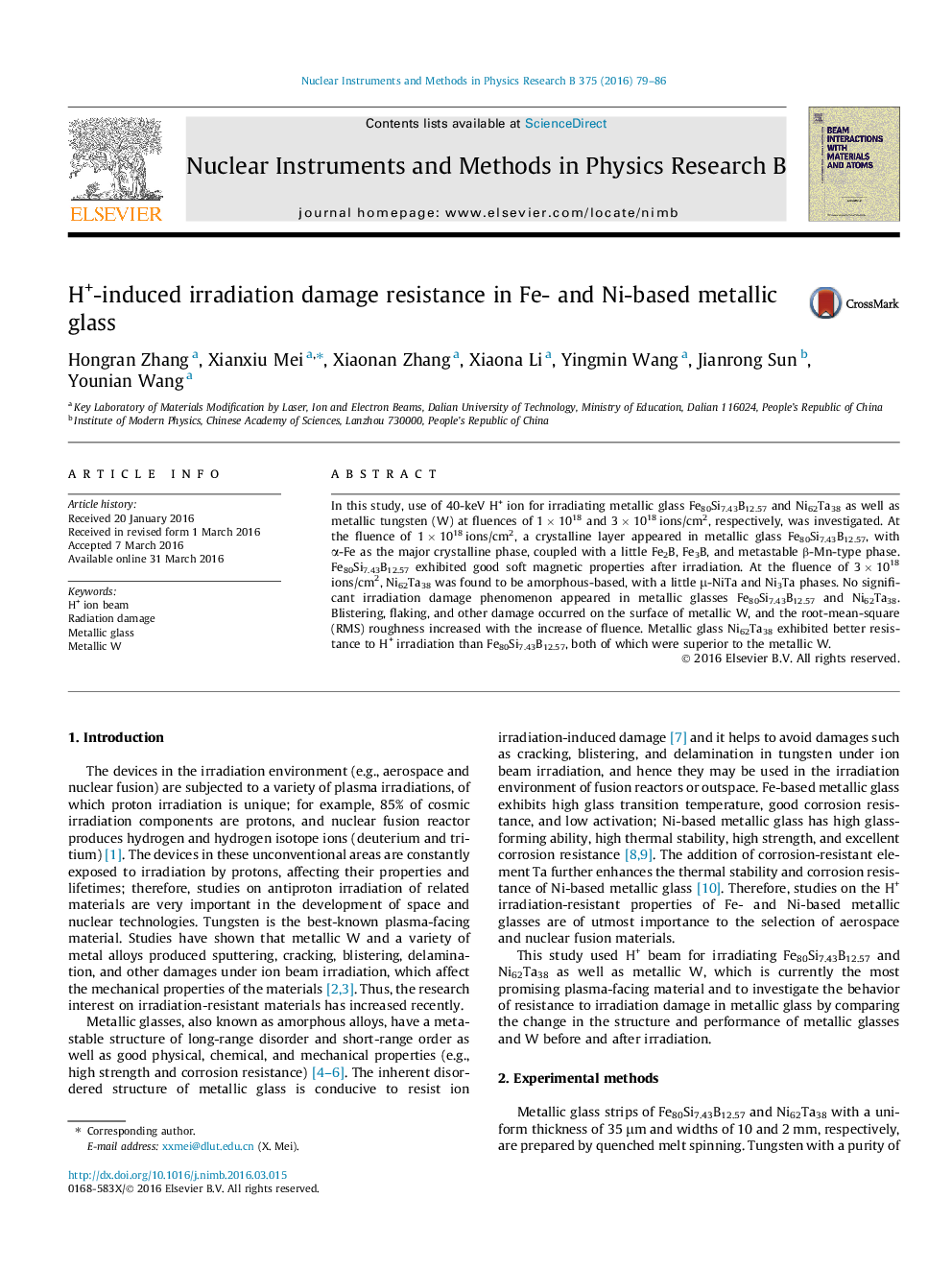| Article ID | Journal | Published Year | Pages | File Type |
|---|---|---|---|---|
| 1681275 | Nuclear Instruments and Methods in Physics Research Section B: Beam Interactions with Materials and Atoms | 2016 | 8 Pages |
Abstract
In this study, use of 40-keV H+ ion for irradiating metallic glass Fe80Si7.43B12.57 and Ni62Ta38 as well as metallic tungsten (W) at fluences of 1 Ã 1018 and 3 Ã 1018 ions/cm2, respectively, was investigated. At the fluence of 1 Ã 1018 ions/cm2, a crystalline layer appeared in metallic glass Fe80Si7.43B12.57, with α-Fe as the major crystalline phase, coupled with a little Fe2B, Fe3B, and metastable β-Mn-type phase. Fe80Si7.43B12.57 exhibited good soft magnetic properties after irradiation. At the fluence of 3 Ã 1018 ions/cm2, Ni62Ta38 was found to be amorphous-based, with a little μ-NiTa and Ni3Ta phases. No significant irradiation damage phenomenon appeared in metallic glasses Fe80Si7.43B12.57 and Ni62Ta38. Blistering, flaking, and other damage occurred on the surface of metallic W, and the root-mean-square (RMS) roughness increased with the increase of fluence. Metallic glass Ni62Ta38 exhibited better resistance to H+ irradiation than Fe80Si7.43B12.57, both of which were superior to the metallic W.
Keywords
Related Topics
Physical Sciences and Engineering
Materials Science
Surfaces, Coatings and Films
Authors
Hongran Zhang, Xianxiu Mei, Xiaonan Zhang, Xiaona Li, Yingmin Wang, Jianrong Sun, Younian Wang,
